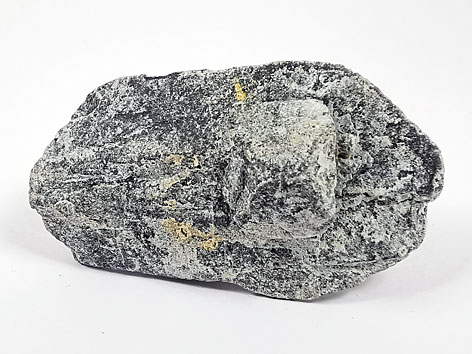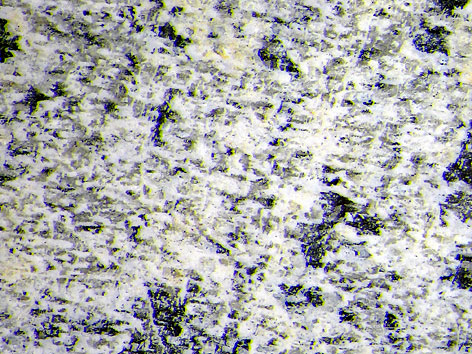
Kenyait als weiße Beschichtung auf einem Anorthoklas-Zwilling
Mount Erebus, Ross-Insel, Viktorialand, Antarktis
Kristall: 5,7 x 3,4 cm

Kenyait (weiß) auf Anorthoklas (grau)
Detail der links abgebildeten Stufe
Bildbreite: 4 mm
|
Kenyait |
|
|
Formel: |
Na2Si22O41(OH)8·6H2O (9.HA.10; Kenyait-Gruppe) |
|
Ausbildung: |
monoklines Kristallsystem; als weiße Beschichtungen und körnige, knotige Aggregate (Konkretionen) |
|
Entdeckung: |
IMA 1967-018; 1967 - H. P. Eugster; benannt nach dem Land Kenia, in dem die Typlokalität liegt |
|
Typlokalität: |
Kenia, Kajiado County, South Rift Valley, Lake Magadi |
|
Seltenheit: |
höchst selten (Mineralienatlas: 8 / Mindat: 10 Lokalitäten; 2023) |
|
Kenyait als weiße Beschichtung auf einem Anorthoklas-Zwilling Mount Erebus, Ross-Insel, Viktorialand, Antarktis Kristall: 5,7 x 3,4 cm
|
Kenyait (weiß) auf Anorthoklas (grau) Detail der links abgebildeten Stufe Bildbreite: 4 mm
|
Quellen: Sammlung und Fotos Matthias Kahl; allg. Mineralbeschreibung nach Mineralienatlas.de, Mindat.org, Handbook of Mineralogy, DeWikipedia und/oder Lapis-Mineralienmagazin
© copyright Matthias Kahl